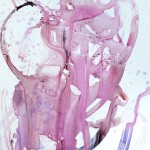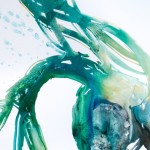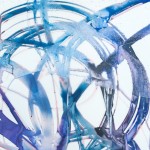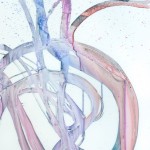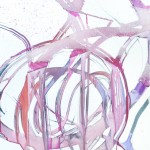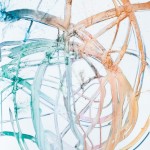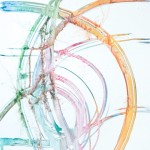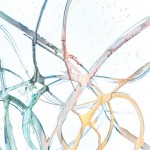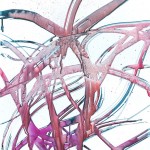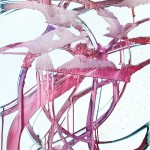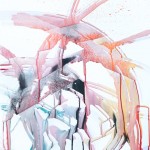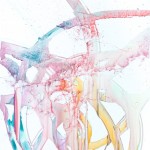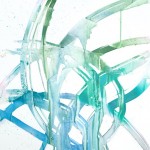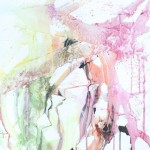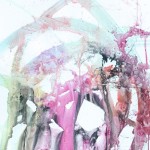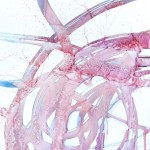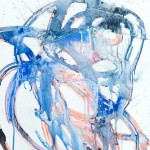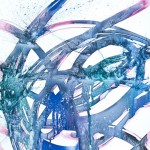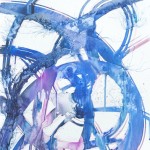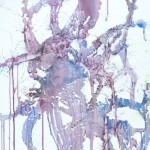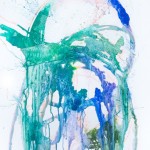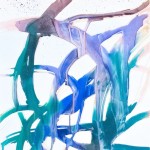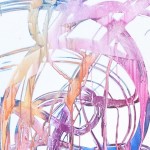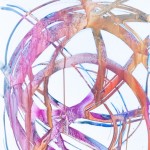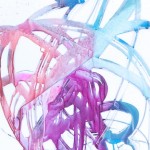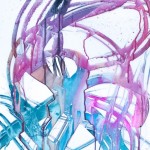“The Verge”
Experience itself is irrational. It’s the product of reality meeting up with awareness. Rationality is the combination, the “ratio,” of emotion and reason. Phenomenological explorations have led us to realize that experience is always generated first, before rationality can get its hands on it. When our senses, and our minds, are turned toward an object, the first thing that happens is our pure experience of it. Only after the experience can we apply a name to it, describe it, understand it, think about it. The interesting aspect here is that experience is indescribable without rationality. As social creatures we are incessantly engaging in dialogue with others about experiences. In our own individual minds, we seem to make a shortcut to that mode of engaging awareness by describing it to ourselves. We are rarely aware of the experience itself, without descriptors and rational connections.
Most of us can remember times when we had experience without rationality, so we know what that feels like in our own lives: seeing the love of your life for the first time, the beauty of the Sistine Chapel or the Grand Canyon, that perfect wine and cheese pairing, stubbing your toe, gulping water after a tremendous workout, wild sex, that first avant cello concert. We all know very well what it’s like to think about these things after the fact, as well. It’s very different, and very distant from the experience itself. The very place where this transition occurs, where experience and rationality meet, is an unseen and mysterious place. “The Verge” draws it into the visible realm.
The colors are often vibrant, the composition and forms are wild and loosely structured, and there is a directional splatter that suggests an impact. Since experience comes before the application of the rational mind, most of what is present in the images is this element of experience. Looking closely at each image, though, one can see broad lines of distortion that run through the forms. This is linear rationality grabbing hold of the experience, the beginning of the transition from experience itself to the thought of the experience.
There is also a place in each image through which I try to manifest the content in the audience-artwork engagement; instead of only trying to convey the content, I attempt to actually conjure it up while people are viewing the pieces. There are subtle forms in each painting, confined to small areas, that can give rise to a gestalt image. It is my hope that while looking at these areas the audience will “see” a form that is composed by their own minds and then name that form immediately afterward, thereby generating a self reflexive quality through the engagement.
- “The Verge 0″ watercolor on plastic, w25″ x h38” $1,000
- “The Verge 5″ watercolor on plastic, w25″ x h38” $500
- “The Verge 11″ watercolor on plastic, w25″ x h38” $200
- “The Verge 12″ watercolor on plastic, w25″ x h38” $200
- “The Verge 13″ watercolor on plastic, w25″ x h38” $200
- “The Verge 14″ watercolor on plastic, w25″ x h38” $200
- “The Verge 15″ watercolor on plastic, w25″ x h38” $200 Sold
- “The Verge 16″ watercolor on plastic, w25″ x h38” $200
- “The Verge 17″ watercolor on plastic, w25″ x h38” $200
- “The Verge 18″ watercolor on plastic, w25″ x h38” $200
- “The Verge 22″ watercolor on plastic, w25″ x h38” $200 Sold
- “The Verge 23″ watercolor on plastic, w25″ x h38” $200
- “The Verge 24″ watercolor on plastic, w25″ x h38” $200
- “The Verge 25″ watercolor on plastic, w25″ x h38” $200
- “The Verge 26″ watercolor on plastic, w25″ x h38” $200
- “The Verge 29″ watercolor on plastic, w25″ x h38” $200
- “The Verge 30″ watercolor on plastic, w25″ x h38” $200
- “The Verge 31″ watercolor on plastic, w25″ x h38” $200 Sold
- “The Verge 32″ watercolor on plastic, w25″ x h38” $200 Sold
- “The Verge 34″ watercolor on plastic, w25″ x h38” $200
- “The Verge 35″ watercolor on plastic, w25″ x h38” $200 Sold
- “The Verge 36″ watercolor on plastic, w25″ x h38” $200
- “The Verge 38″ watercolor on plastic, w25″ x h38” $200
- “The Verge 39″ watercolor on plastic, w25″ x h38” $200 Sold
- “The Verge 40″ watercolor on plastic, w25″ x h38” $200 Sold
- “The Verge 41″ watercolor on plastic, w25″ x h38” $200 Sold

